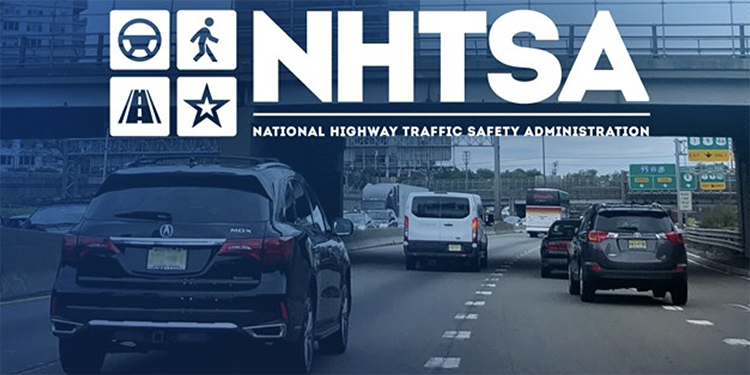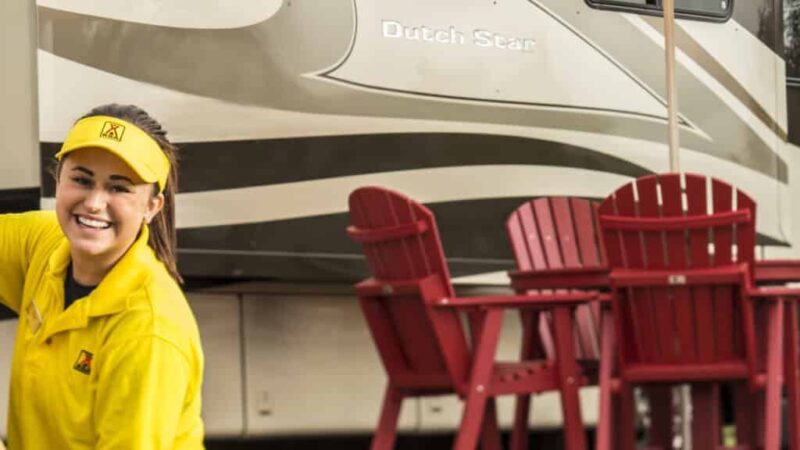What Lies Beneath
Be sure to schedule or perform regular maintenance on your RV’s chassis — you’ll thank yourself later!
By Steve Froese, F276276
I often emphasize the importance of RV maintenance. Most of my columns in Family RVing magazine have focused on “house” systems, with topics such as seal maintenance and propane system upkeep. Here, I will provide some insight into chassis maintenance. It’s as important as taking care of other systems and is sometimes overlooked by RV owners. You won’t get very far in your RV if you don’t maintain it.
Let’s start with towable units, including travel trailers and fifth-wheels. Among the most important tasks when it comes to towable RV chassis maintenance are annual brake inspections and bearing repacks. While some modern trailers have self-adjusting brakes, this historically has not been the case. Some owners neglect the critical task of repacking bearings and adjusting the brakes. Bearing repacking is a messy but fundamentally important job. Neglecting this for too long can result in damaged bearings, usually from a lack of fresh grease, causing them to fail.
Damaged wheel bearings may result in a failure at the hub, which happens while driving. This can result in an accident, potentially causing vehicle damage, injury, or even death. It is outside the scope of this article to discuss how to perform a bearing inspection and repack, but if you are not comfortable doing this, please take your trailer to a qualified RV or axle shop annually to have this done. Since the wheels are removed for this procedure, a brake inspection and adjustment should be performed at the same time. In addition to checking the brake hardware, this also is a good time to check the brake shoes for wear and to adjust the brakes, drum, armature, and magnet. I rate bearing repack and brake adjustment as a 3.5 out of 5 in terms of difficulty, so many RV owners opt to have this professionally done at a dealership or axle shop. Do not neglect this important annual procedure.
Many other trailer chassis maintenance items can also be easily checked during the bearing and brake work. Regular inspection of the axle and suspension system should be performed. Springs, shackles, hangers, and brackets should be checked for damage or wear, including cracks (which are sometimes the result of a failed weld). While the trailer is on jack stands, the emergency breakaway should be tested to make sure the wheels lock up when the pin is pulled; this requires a charged auxiliary battery.
Perform a general visual inspection of the trailer chassis. Pay particular attention to the A-frame or gooseneck areas, focusing on the hitch mechanism, wiring harness and connector, electrical ground points, propane lines, etc. Inspect the overall condition of the battery, and ensure that the electrolyte level is full in the case of non-maintenance-free lead-acid batteries. Clean off any corrosion using a baking soda and water mixture or a commercial spray. Make sure the trailer wiring connector is free of moisture, dirt, damage, and corrosion.
The following inspection points apply to both motorized and towable units.
Tires should be checked for wear, damage, and age. RV tires generally age out before they wear out. Trailer tires last an average of five to seven years before they deteriorate to an unsafe level, whereas motorhome tires can last on average of seven or more years, but these figures are a rough estimate only. It is important to have the tires professionally inspected by a reputable tire shop, since not all deterioration or damage is immediately visible. Michelin recommends that RV tires that have been in service for 10 years or more be replaced as a precaution, even if they have still appear serviceable and have not reached their legal wear limit. Goodyear makes the same recommendation for RV tires once they have been in service for six or more years. The same recommendations apply to spare tires.
Before you set off on each driving day, check the tires for proper inflation pressure as recommended by the tire manufacturer. Note that the pressure stamped on the sidewall is not necessarily the best pressure for your RV. Ideally, you should have your RV weighed at each tire position. This will dictate the correct inflation pressure and will likely vary by tire position. Remember to keep all pressures the same on any given axle, based on the most heavily loaded position. Inflation pressure versus tire loading charts can be found online for many tire manufacturers. FMCA conventions are a great place to get RV rig weighed.
Every RV has a certification label that notes the maximum axle weight (gross axle weight rating) and the minimum pressure needed to support it. So, until you can get on a scale to confirm your weights, the PSI on the label is the inflation pressure you should use.
In addition, check all exterior lights for proper operation, including running and clearance lights. Replace any bulbs that are not working and troubleshoot any wiring problems not related to burned-out bulbs. Such issues are commonly caused by a ground wire issue.
For motorized RVs, the most important thing is to identify a good, reliable mechanic. Your choices may be limited by the size of the vehicle. Since I have a diesel pusher, I rely on my local Freightliner dealership. These days, most heavy truck dealerships also specialize in RVs and often work on Type A motorhomes. It is becoming more difficult in some areas to find mechanics who can accommodate large gas-powered Type A units, so check with your local heavy truck servicing dealers, as they may be able to help you. Major car dealerships often have truck divisions that can accommodate Type A gas units. Heavy-duty shops generally charge more per hour than “regular” mechanics, but there are several advantages, including extended operating hours and large lots. Reliable repair shops are worth their weight in gold, so do your due diligence when choosing one.
Once you find a mechanic, be sure to have annual chassis and engine service performed. This should include a full lube job (front and rear end), oil change, fluid check, brake inspection, belt inspection, etc. Always ask the shop what services are being performed as part of a full-service appointment. During the travel season, take note of anything that needs to be repaired. If it’s not urgent, add it to the list of things for the next service visit.
You don’t want any avoidable surprises that might leave you stranded on the side of the road. Breakdowns will always be a fact of life, but they can be largely mitigated by having regular maintenance performed on your RV. Don’t cut corners in this regard. Whatever money you need to spend during annual servicing would be eclipsed by the cost and lost time of a roadside breakdown.
The post What Lies Beneath appeared first on Family RVing Magazine.
Source: https://familyrvingmag.com/2023/12/18/what-lies-beneath/




